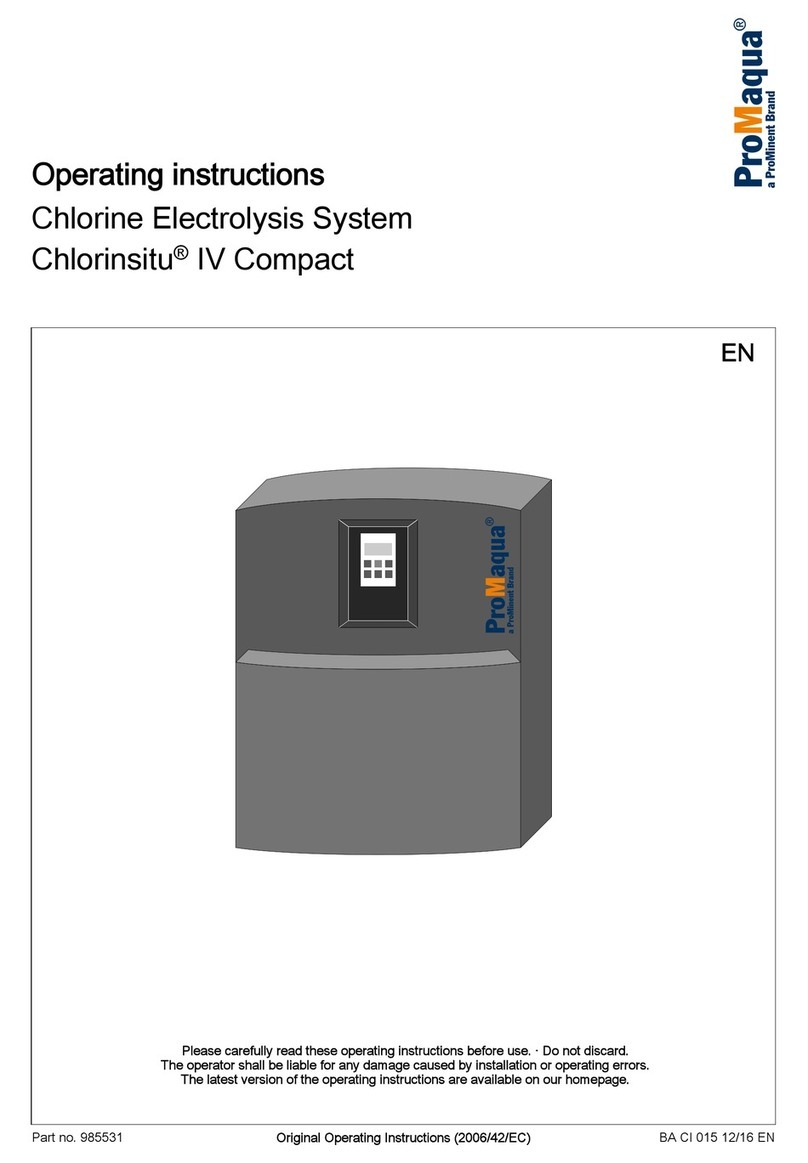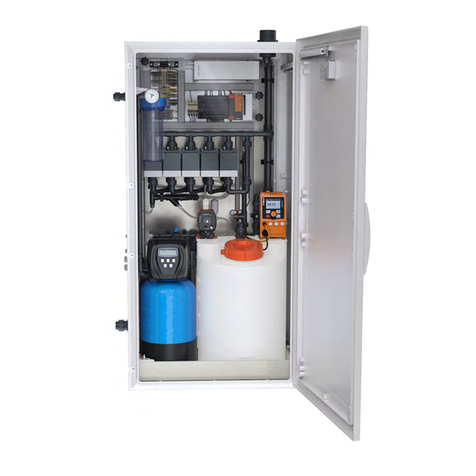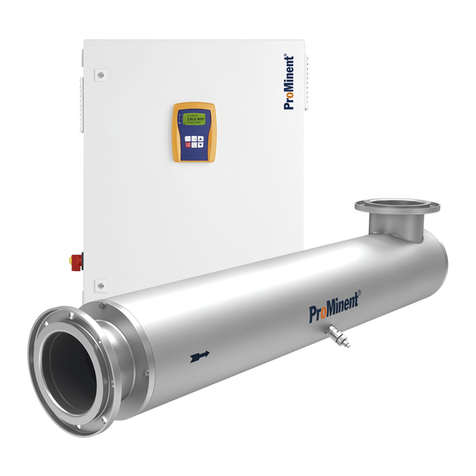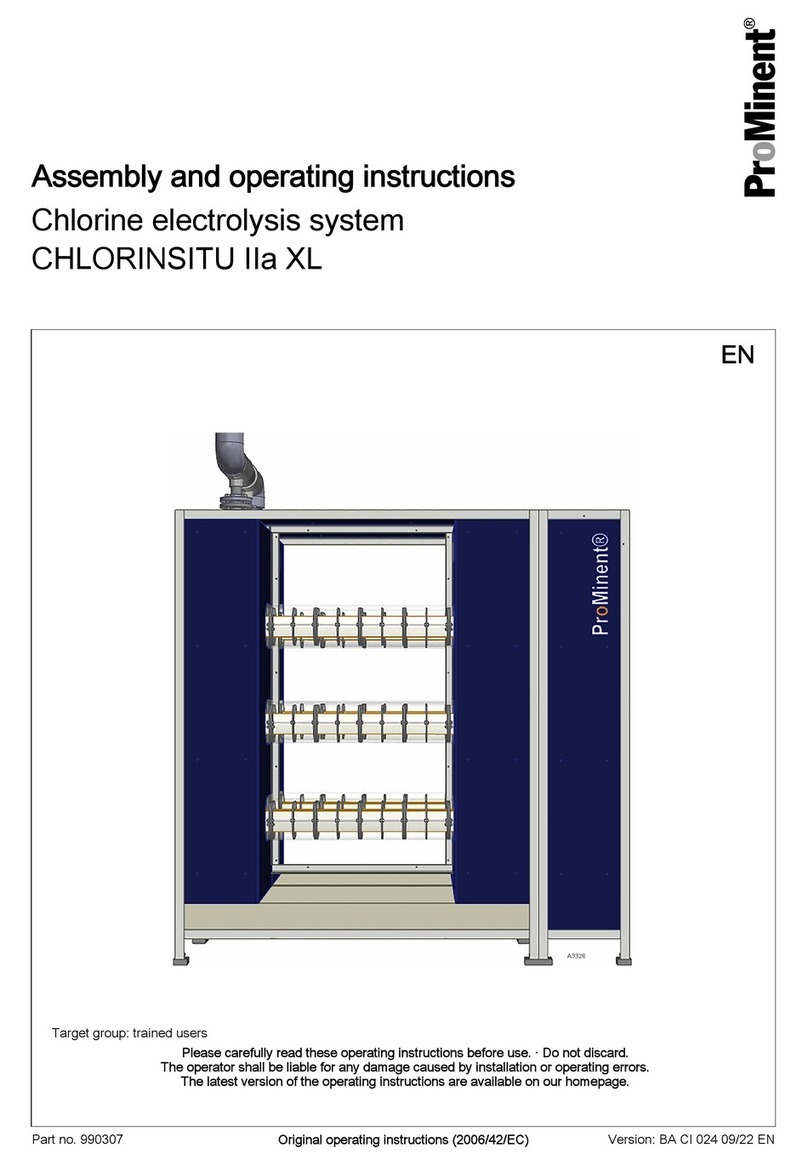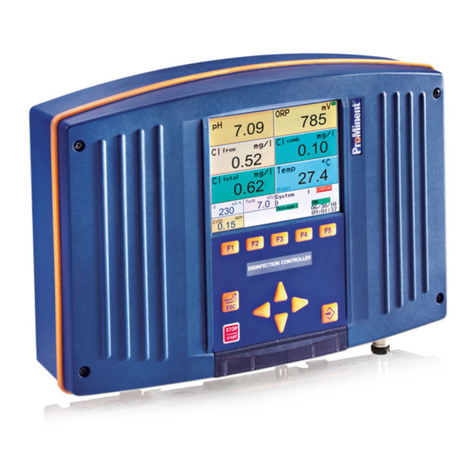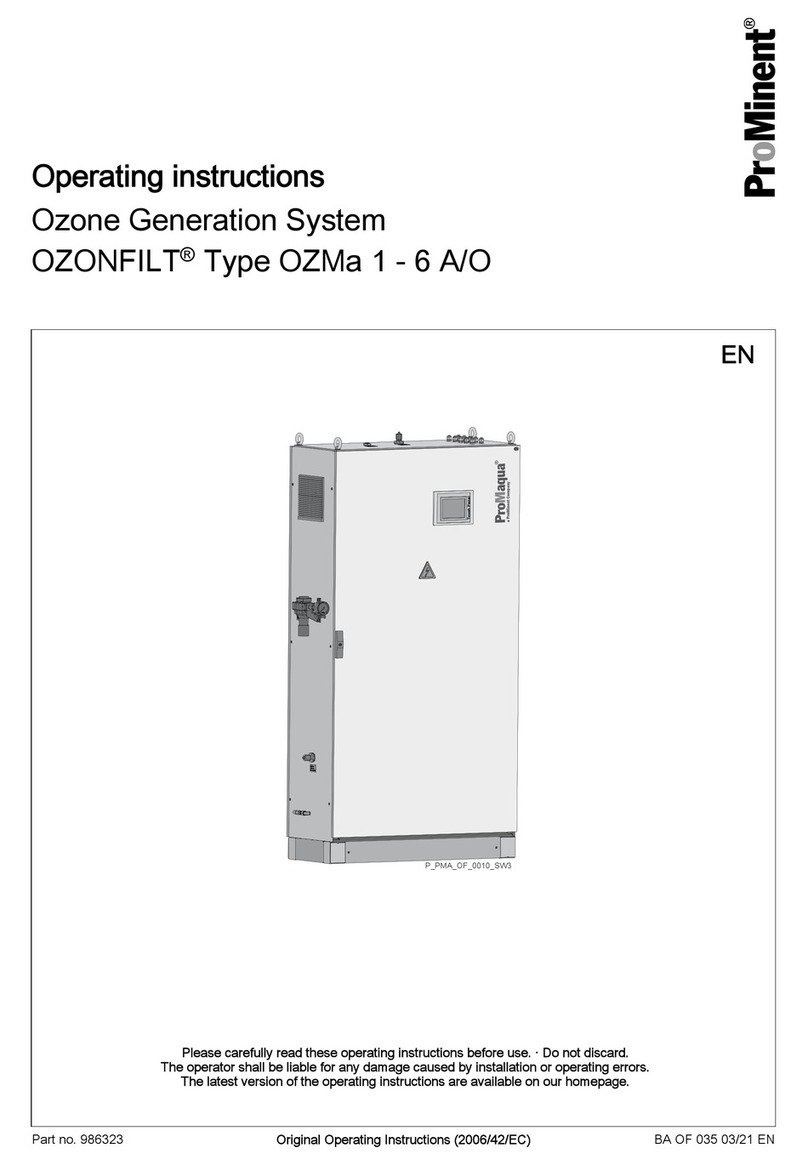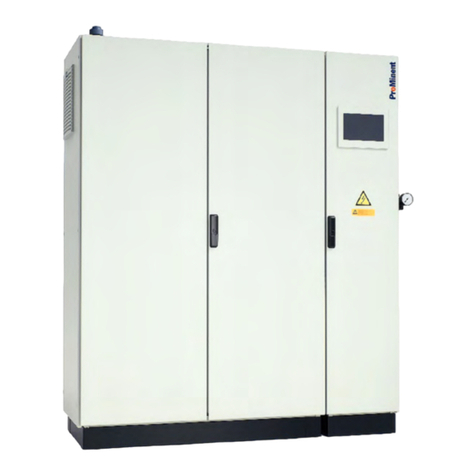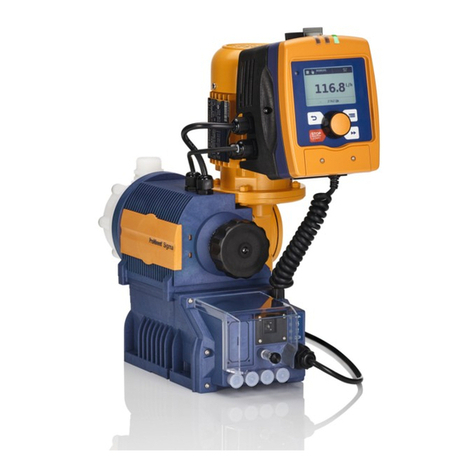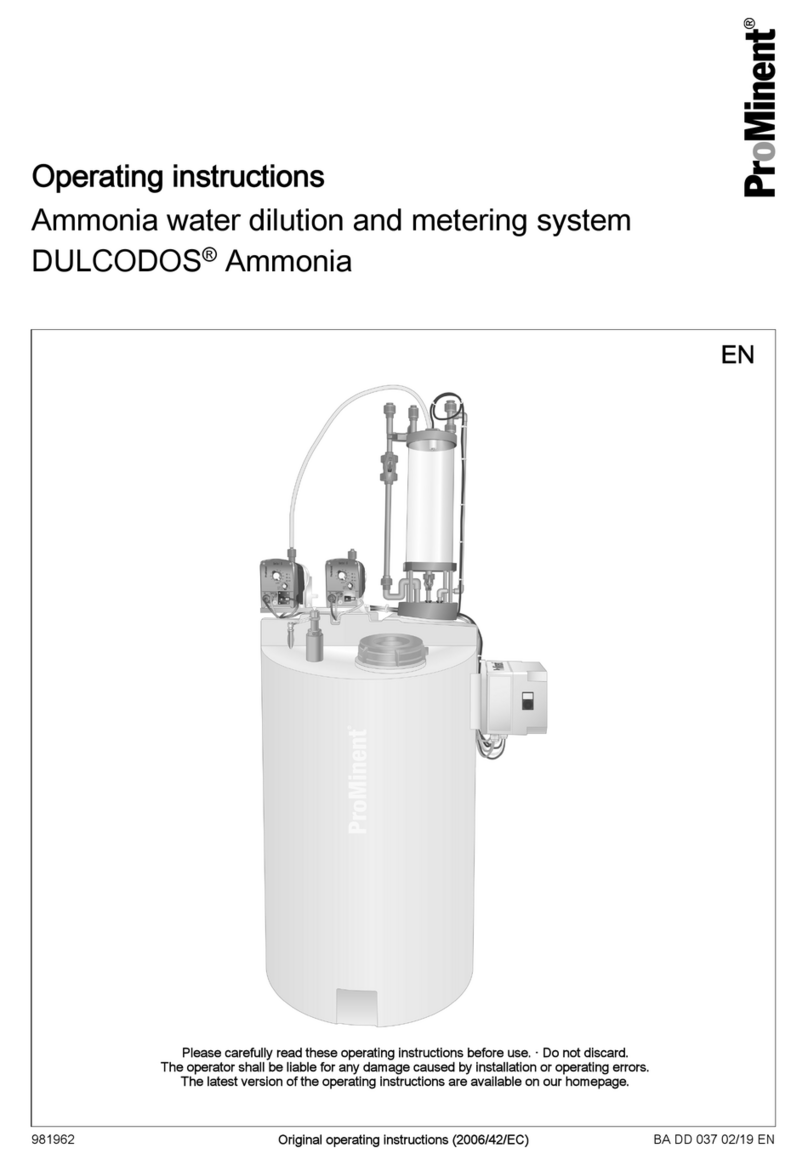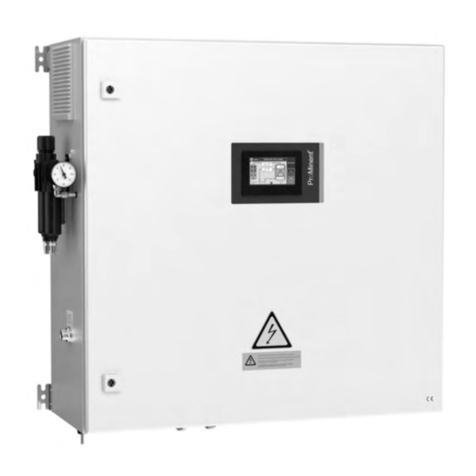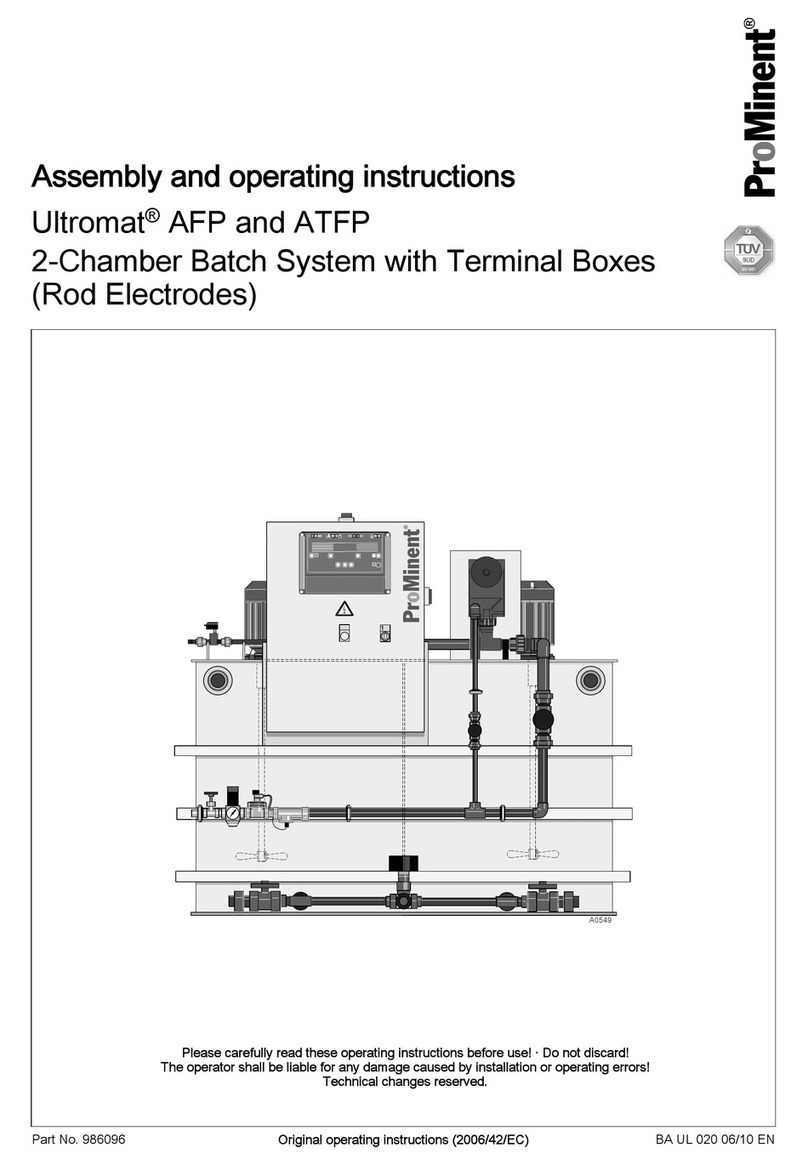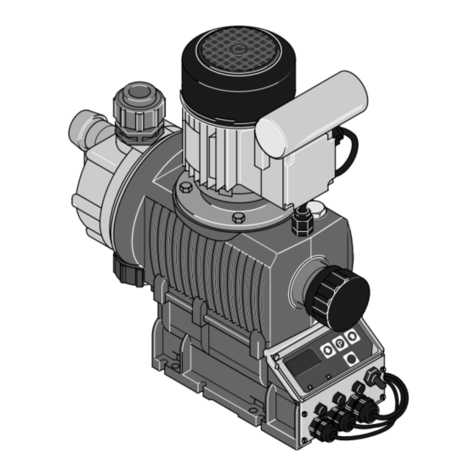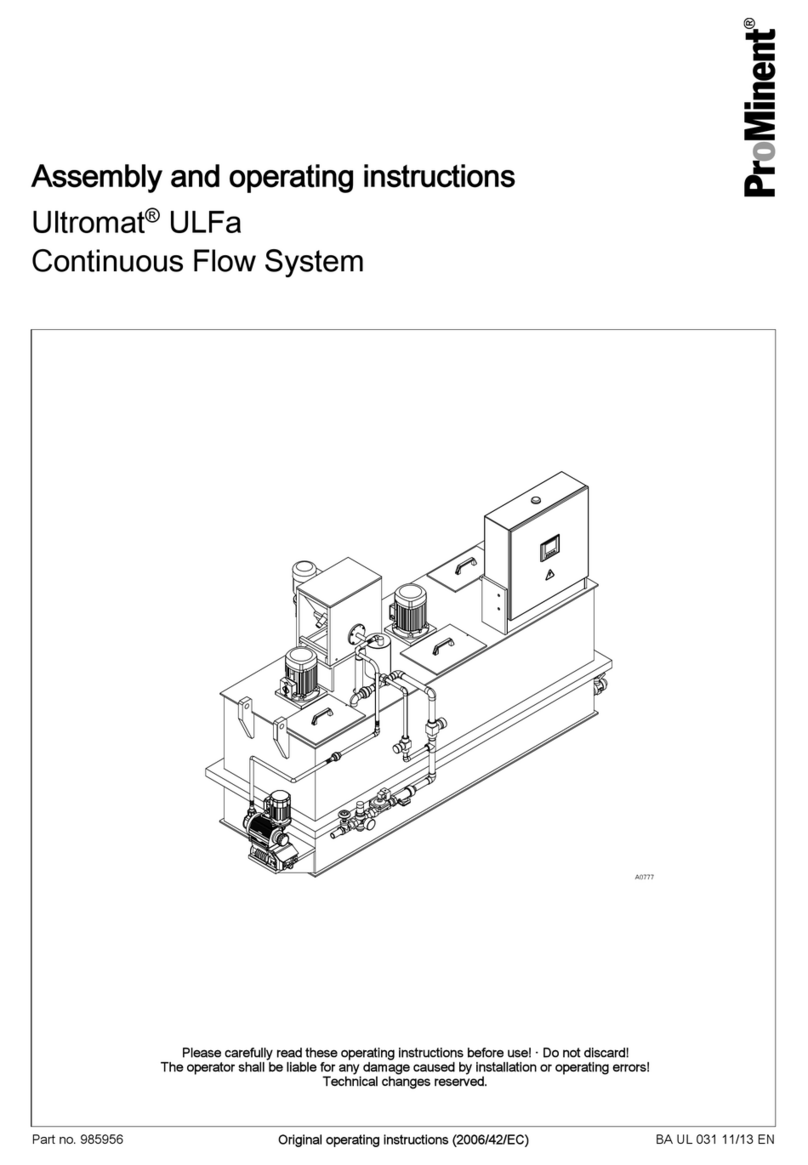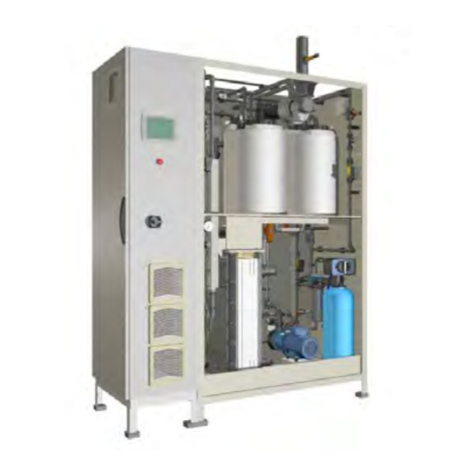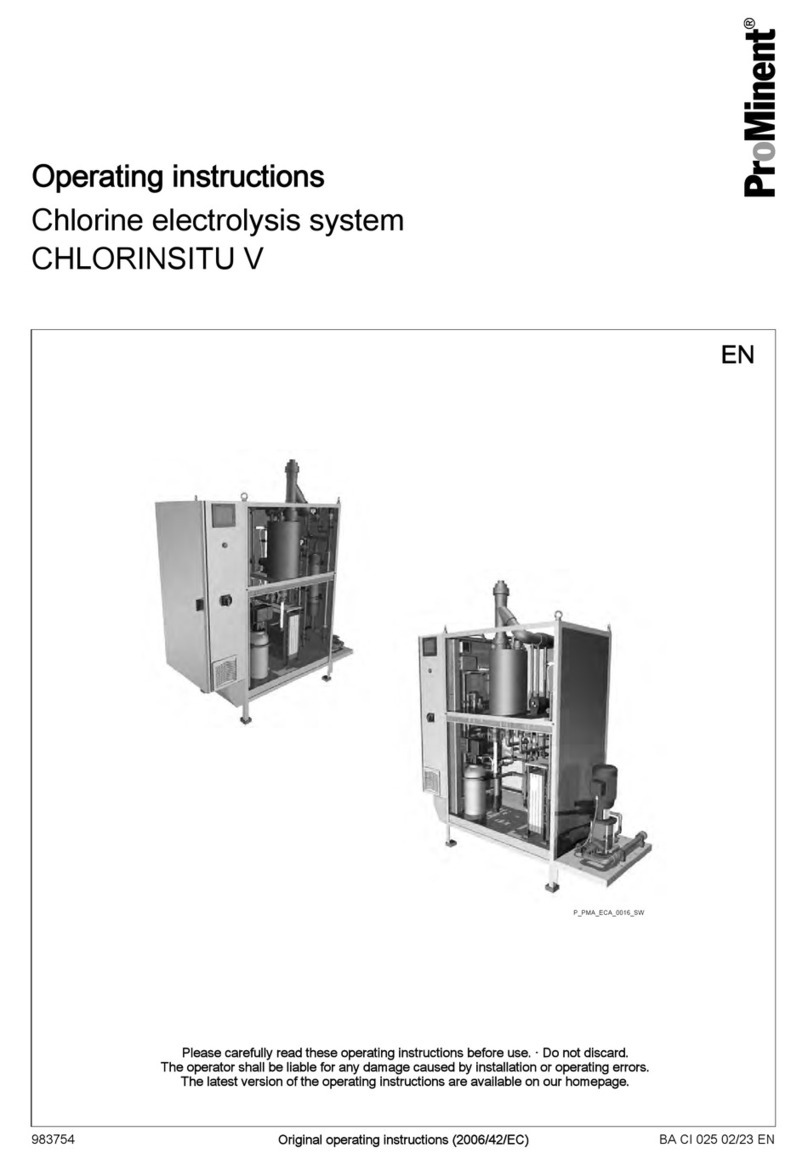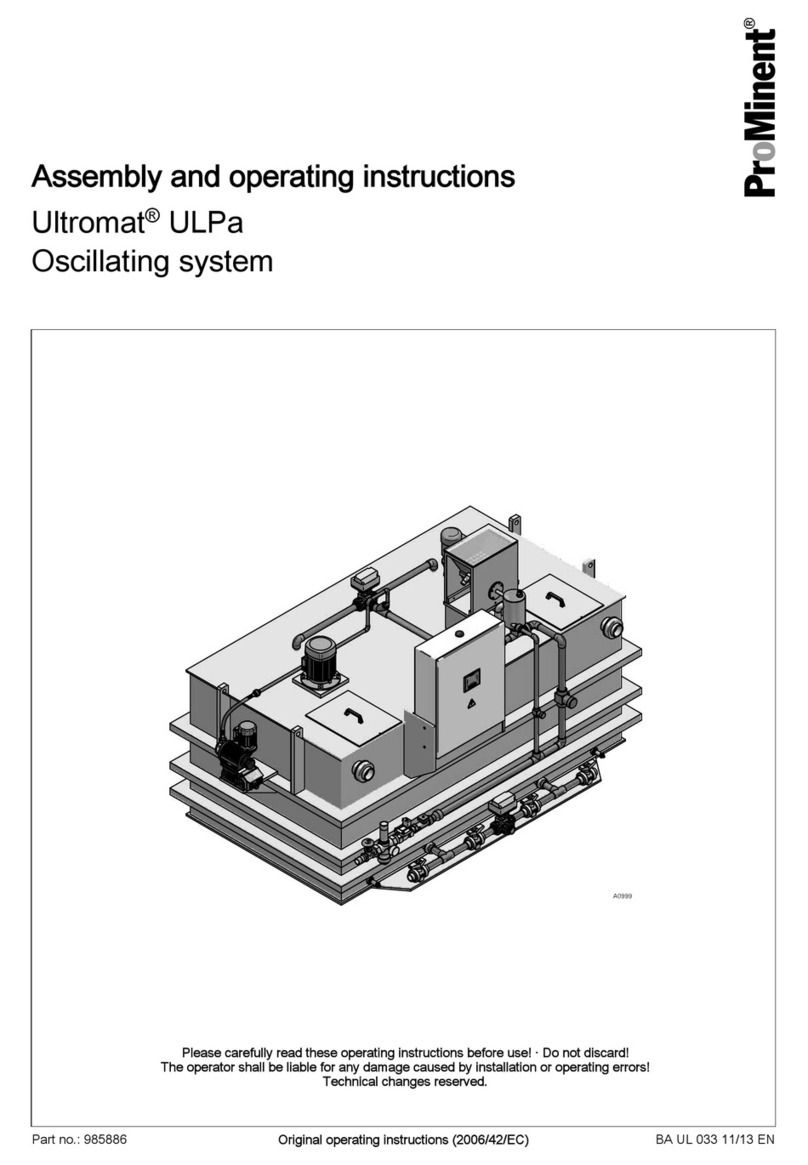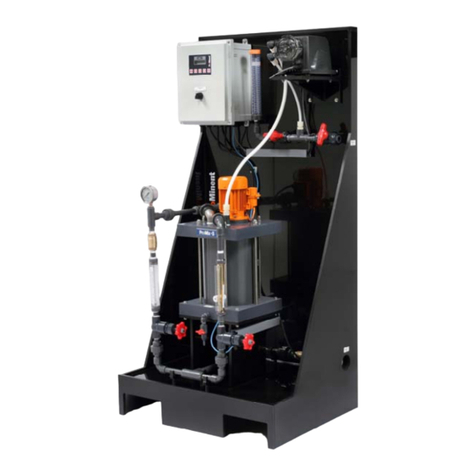
ProMinent®
Page 4
Table of Contents
1.5 Chlorine dioxide system accessories .............................................................................. 33
1.5.1 Bypass pump with wall bracket ........................................................................... 33
1.5.2 Safety trays 70 l .................................................................................................... 33
1.5.3 Premixing (static mixer) ........................................................................................ 34
1.5.4 Protective filter ..................................................................................................... 34
1.5.5 Ventilation valves .................................................................................................. 34
1.5.6 Set for determining chlorine dioxide .................................................................... 34
1.5.7 Intake lances, intake fitings .................................................................................. 35
1.5.8 Spare part sets ..................................................................................................... 35
1.5.9 Part number table for spare parts and spare parts set ........................................ 35
1.6 Heating systems for chemical lines ................................................................................. 36
1.7 Metering systems ............................................................................................................ 36
1.8 Spare parts lists ............................................................................................................... 36
2Commissioning .............................................................................................................. 37
2.1 Information on current regulations .................................................................................. 37
2.2 Initial operation of the system type CDKaxAxxxxxXxx (with calibration vessels) ........... 37
2.2.1 Airing and starting ................................................................................................ 37
2.2.2 Leak test ............................................................................................................... 37
2.2.3 Setting flow monitors ........................................................................................... 38
2.2.4 Setting parameters and calibration ...................................................................... 38
2.2.5 Safety checks ....................................................................................................... 39
2.3 Commissioning system type CDKaxBxxxxxXxx (w/o calibrating vessels) ...................... 40
3Shutting down chlorine dioxide system ...................................................................... 40
3.1 Placing out of operation for a short period of time.......................................................... 40
3.2 Placing out of operation for a longer period of time ........................................................ 40
3.3 Placing out of operation and frost-proof storage ............................................................ 41
4Replacing acid and chlorite component tanks ........................................................... 41
5Operation of chlorine dioxide system .......................................................................... 42
5.1 Setting ball valves ............................................................................................................ 42
5.2 Setting the metering rate ................................................................................................. 42
5.2.1 Menu sequence “internal control”........................................................................ 42
5.2.2 Menu sequence “flow dependent metering”....................................................... 43
5.2.3 Menu sequence “control variable dependent metering”...................................... 44
5.2.4 Menu sequence “bypass options”....................................................................... 45
5.3 Accuracy of metering rate ............................................................................................... 45
5.4 Determining chlorine dioxide concentration .................................................................... 46
5.5 Chlorine dioxide metering rate ........................................................................................ 46
